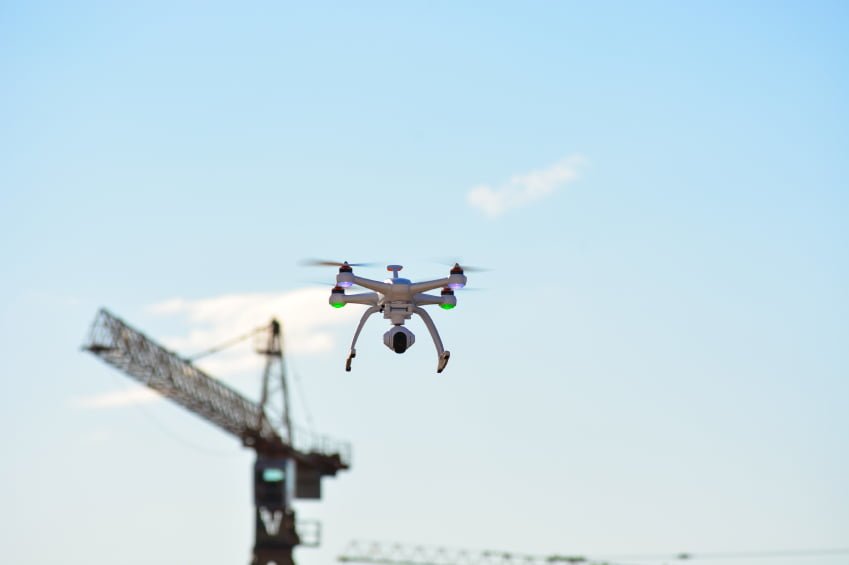The complexities of insuring unmanned aerial vehicles
By: Joe Urquhart, CPCU, CRIS
Vice President
Overmyer Hall Associates
For many industries, drones have changed the traditional approach of improving safety and efficiency. These drones, or unmanned aerial vehicles (UAVs), are playing an increasingly vital role on construction job sites across the country. The can cheaply gather data and images that were recently expensive or impossible to obtain.
When it comes to job site safety, UAVs help ensure that employees are adhering to safe practices and can help detect safety challenges before they occur. The flying cameras can also replace human eyes in unsafe locations, such as roofs, high-up equipment, structurally unstable buildings and the underside of bridges.
From an efficiency perspective, drone technology is changing the way construction companies do business. Now, gone are the days that a project manager had to travel to every jobsite to walk the premises. The drone can capture this footage automatically, saving time and helping the bottom line. By employing UAVs, project managers can have eyes and ears at all their sites at the same time.
Daily aerial reports captured by the UAVs help project managers gauge real-time progress on their job sites. This data enables managers to detect the amount of progress that has been accomplished and compare against the schedule and budget, on any given day, on any given job. As a result, anticipating the variety of potential issues becomes much easier.
Drones can also be used throughout the construction process to capture details that would otherwise be too cost-prohibitive to document. For example, a drone can help document the precise location of rebar within a concrete structure with unmatched accuracy.
Drones are also a project manager’s best friend for reasons beyond progress and efficiency. To keep job sites more secure, drones are being used to help monitor the site to protect against theft and trespassing. In addition to contractors, property owners are realizing the benefits of UAV utilization on their projects.
For many construction companies, UAVs are essentially replacing traditional aerial photography and videography. These flying cameras capture more in-depth aerial footage, providing a much more robust 3-D view of the job site throughout the entire construction process than previously available. This helps property owners envision how the completed project will actually look. In fact, many companies view the interpretations generated from drones to be a strong marketing and business development tool.
This new technology also decreases a number of costs – from replacing helicopter pilots to decreasing the need for cranes –which is a savings that is passed on to the client. As the cost and availability of this technology continues to decrease, drones will become increasingly more prevalent on construction job sites.
With this new technology comes a myriad of complex liability and coverage issues related to insuring the use of commercial UAVs.
The number one thing to keep in mind is the non-registered use of drones can lead to thousands of dollars in fines, or more. In fact, last year the FAA proposed a $1.9 million fine for a company flying unregistered drones in New York and Chicago. Restrictions on the locations and altitudes permitted for UAV flights are an ongoing challenge of which federal and local authorities are still grappling.
Under the standard commercial general liability policies, UAVs are excluded from coverage. Carriers are currently in the process of developing policies to cover the unique exposures presented by drones, but it is a very new industry and the U.S. is still without clear regulatory guidelines. Regardless of the specifics of future regulations, the following general types of coverage will be needed for the use of UAVs in commercial construction: bodily injury and property damage liability, personal injury, and invasion of privacy.
Given that the use of UAVs is completely new ground for the construction and insurance industry, it is imperative to work with an insurance advisor that specializes in these unique exposures and risks. Key underwriting information includes: do you have FAA Approval/333 waiver, a Certificate of Authorization (COA), level of training and experience, and specifications of the drone and use.
While insurance coverage for commercial drones is largely undefined, there is no denying that UAV use is a growth area for commercial construction. While you are staying ahead of the game in this expanding field, be sure you’re covering yourself along the way.
Joe Urquhart, CPCU, CRIS
Joe Urquhart specializes in insurance and risk management programs for all types of contractors, as well as real estate developers and owners. Joe is a Vice President with Overmyer Hall Associates, a Central Ohio based commercial property & casualty agency specializing in the construction industry. Joe can be reached at 614-453-4410 or Jurquhart@oh-ins.com.
About Overmyer Hall Associates
Overmyer Hall Associates is one of the fastest growing agencies in the country, quickly becoming one of the largest property and casualty insurance agencies in Central Ohio. Overmyer Hall Associates provides clients with insurance and risk management, specializing in Business Insurance, Surety Bonding, and Home & Auto Insurance. Since its founding in 2011, the firm has been awarded Columbus Business First’s "Fast 50" and "Best Places to Work" awards, the IIABA’s “Best Practices Agency” recognition, Columbus CEO Magazine’s “Best Insurance Broker” and the Columbus Young Professionals Club’s “Wonderful Workplace for Young Professionals” award. www.oh-ins.com
